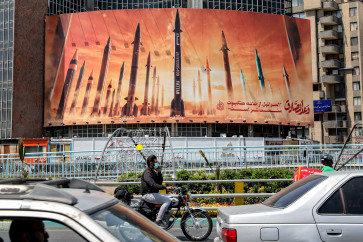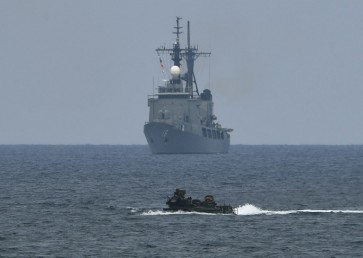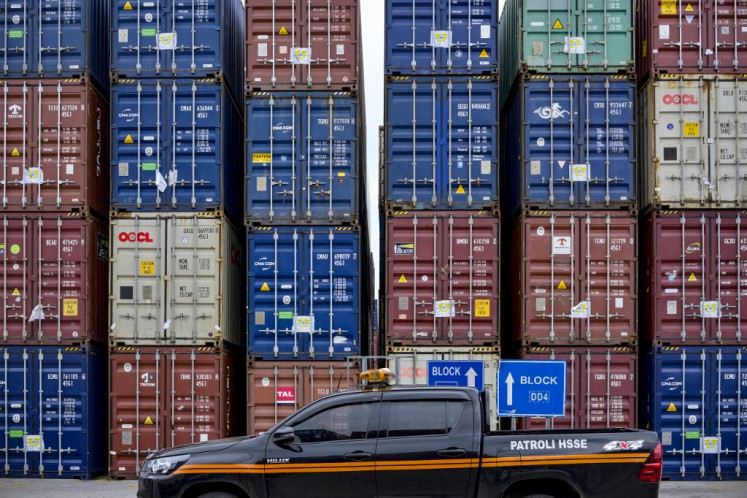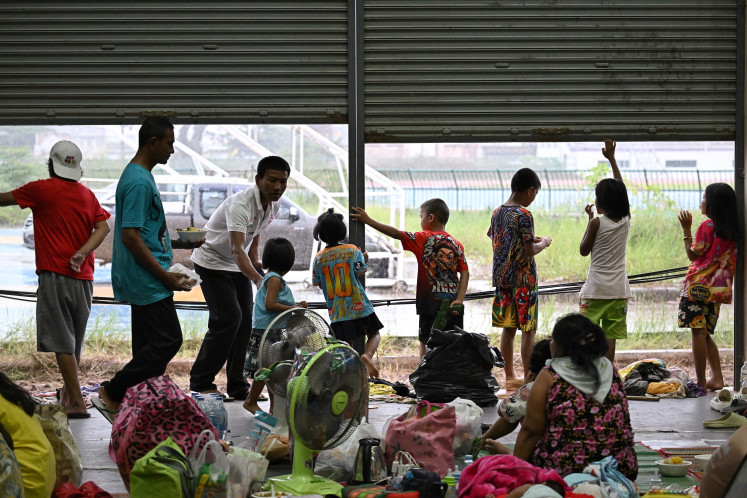Popular Reads
Top Results
Can't find what you're looking for?
View all search resultsPopular Reads
Top Results
Can't find what you're looking for?
View all search resultsThree state firms join forces to build LNG terminal in Bali
State-owned electricity firm PT Perusahaan Listrik Negara (PLN), oil and gas giant PT Pertamina and port operator PT Pelabuhan Indonesia III (Pelindo III) are to team up to build a liquefied natural gas (LNG) receiving terminal in Tanjung Benoa, Bali, to boost the countryâs gas supply
Change text size
Gift Premium Articles
to Anyone
S
tate-owned electricity firm PT Perusahaan Listrik Negara (PLN), oil and gas giant PT Pertamina and port operator PT Pelabuhan Indonesia III (Pelindo III) are to team up to build a liquefied natural gas (LNG) receiving terminal in Tanjung Benoa, Bali, to boost the country's gas supply.
State-Owned Enterprises Minister Dahlan Iskan said in Jakarta on Thursday that the LNG would be supplied to Bali's power plants, which at present mostly use diesel oil.
Under the plan, development of the LNG facility in Bali will be carried out in two stages: the construction of floating storage, and the building of an on-land receiving terminal.
The floating storage will serve as a temporary facility before the on-land receiving terminal, which will be built within the area of the Tanjung Benoa port operated by Pelindo III, is ready for operations. The on-land receiving facility is now under construction and will take two years to complete.
'We will rent floating storage facilities while we wait for the completion of the on-land terminal,' he said, adding that he hoped that the on-land facility would be able to begin operations next year.
Meanwhile, the supply of gas is expected to come from Badak LNG plant in Bontang, East Kalimantan, whose gas is mostly produced by the nearby Badak field. The plant is jointly owned by Pertamina, Total E&P Indonesie, Vico Indonesia and Japan Indonesia LNG Co.
'Any supply from private players, for example Sengkang and Tangguh, would also be welcomed,' Dahlan added.
Indonesia is thought to be sitting on a significant amount of gas. However, most of its gas is sent abroad, making the country one of the largest suppliers of LNG.
- Terminal to be built at Tanjung Benoa port
- Local power plants are expected to be able to use LNG beginning next year
- PLN wants to see LNG more widely distributed in eastern Indonesia
The government is trying to boost the usage of gas in the domestic market before it runs out of the commodity. The Upstream Oil and Gas Regulatory Special Task Force (SKKMigas) is aiming to see 53.8 percent of total gas production this year consumed by domestic players, rising from 52 percent last year.
The use of gas for electricity is also expected to help the country reduce its dependency on oil fuel to supply power plants.
PLN said earlier that it would need 28 cargoes of LNG this year to fuel its power plants. The company has predicted that its usage of LNG will keep growing in the future in line with the government's policy on reducing oil consumption.
Head of PLN's oil-based fuel and gas division Suryadi Mardjoeki, meanwhile, said that PLN's subsidiary PT Indonesia Power had secured contracts to lease two vessels to act as floating storage facilities. The first vessel, he said, would be the carrier vessel, while the second would store the LNG.
Suryadi said that the development of the LNG receiving terminal in Bali was part of the company's wider plan to establish an LNG distribution route in the eastern part of the country.
'I'm looking to put out a tender for the development of facilities and transportation in Nusa Tenggara so that we can see a cycle of LNG distribution across Bali and Nusa Tenggara. The gas is expected to be from Salawati block operated by Petrochina,' Suryadi said, adding that talks over the supply had already begun.










